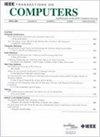A GPU-Enabled Framework for Light Field Efficient Compression and Real-Time Rendering
IF 3.6
2区 计算机科学
Q2 COMPUTER SCIENCE, HARDWARE & ARCHITECTURE
引用次数: 0
Abstract
Real-time rendering offers instantaneous visual feedback, making it crucial for mixed-reality applications. The light field captures both light intensity and direction in a 3D environment, serving as a data-rich medium to enhance mixed-reality experiences. However, two major challenges remain: 1) current light field rendering techniques are unsuitable for real-time computation, and 2) existing real-time methods cannot efficiently process high-dimensional light field data on GPU platforms. To overcome these challenges, we propose an framework utilizing a compact neural representation of light field data, implemented on a GPU platform for real-time rendering. This framework provides both compact storage and high-fidelity real-time computation. Specifically, we introduce a ray global alignment strategy to simplify the framework and improve practicality. This strategy enables the learning of an optimal embedding for all local rays in a globally consistent way, removing the need for camera pose calculations. To achieve effective compression, the neural light field is employed to map each embedded ray to its corresponding color. To enable real-time rendering, we design a novel super-resolution network to enhance rendering speed. Extensive experiments demonstrate that our framework significantly enhances compression efficiency and real-time rendering performance, achieving nearly 50求助全文
约1分钟内获得全文
求助全文
来源期刊

IEEE Transactions on Computers
工程技术-工程:电子与电气
CiteScore
6.60
自引率
5.40%
发文量
199
审稿时长
6.0 months
期刊介绍:
The IEEE Transactions on Computers is a monthly publication with a wide distribution to researchers, developers, technical managers, and educators in the computer field. It publishes papers on research in areas of current interest to the readers. These areas include, but are not limited to, the following: a) computer organizations and architectures; b) operating systems, software systems, and communication protocols; c) real-time systems and embedded systems; d) digital devices, computer components, and interconnection networks; e) specification, design, prototyping, and testing methods and tools; f) performance, fault tolerance, reliability, security, and testability; g) case studies and experimental and theoretical evaluations; and h) new and important applications and trends.
 求助内容:
求助内容: 应助结果提醒方式:
应助结果提醒方式:


